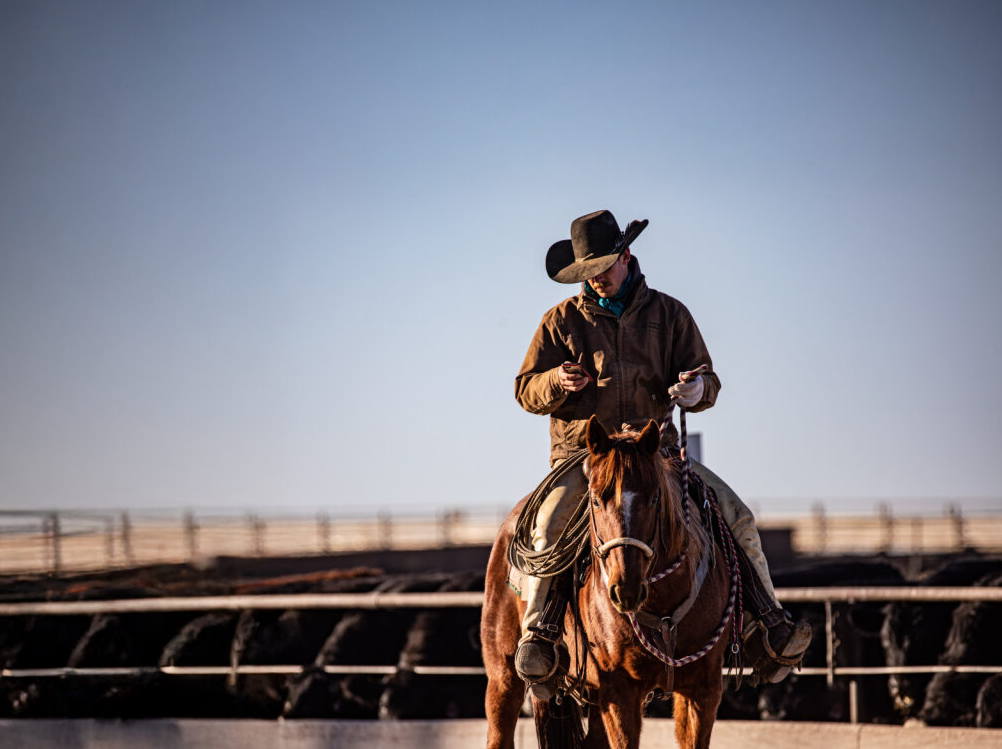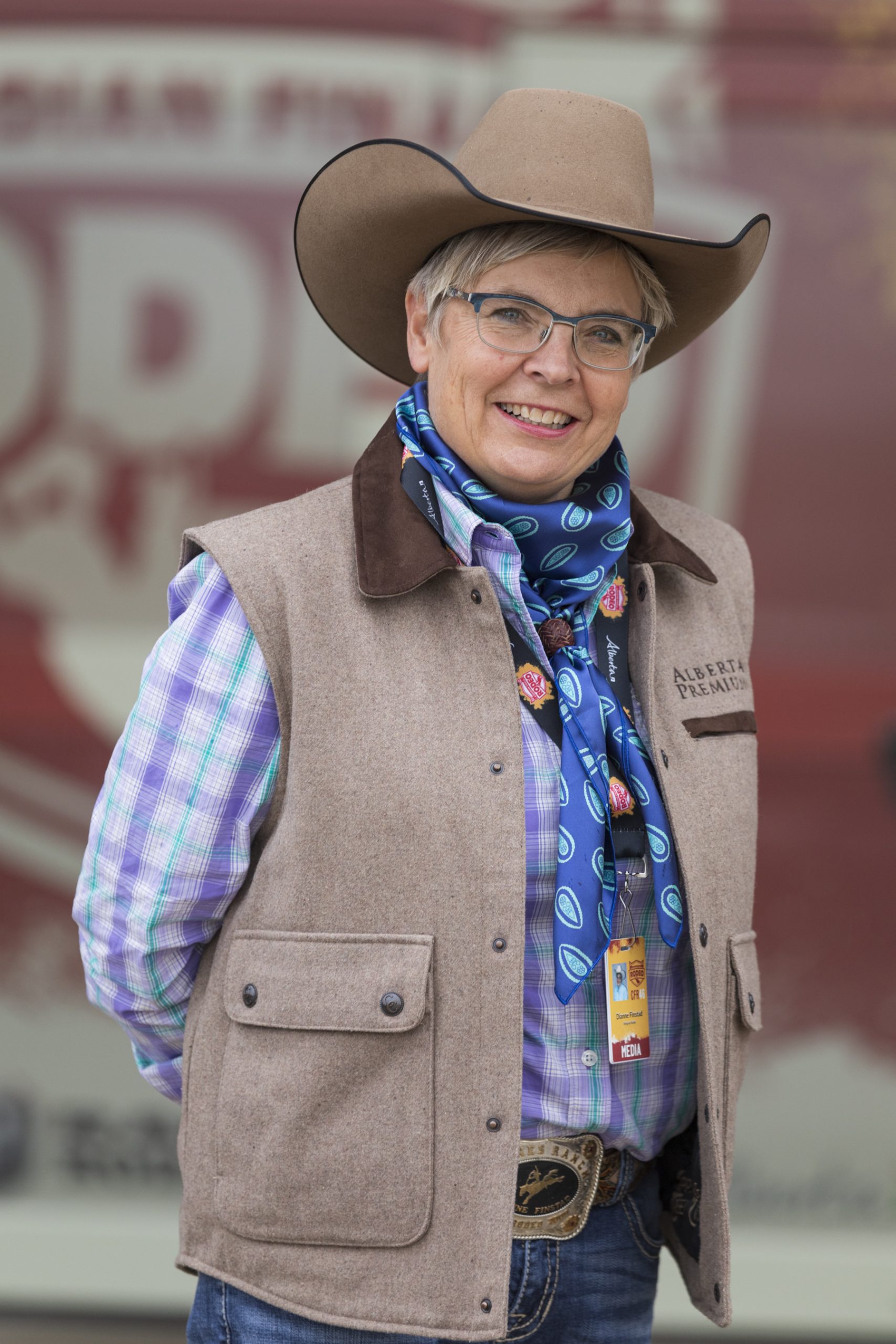AB Direct - Steers
Rail: 495.00 del
AB Direct - Heifers
Rail: 495.00 del
US Trade- Steers
Rail: 355.00-363.00 (IA, NE)
US Trade - Heifers
Rail: 355.00-363.00 (IA, NE)
Canadian Dollar
0.05

ABP Tech Update: SenseHub
Ear tags can be used for much more than just the identity of an animal these days. One of the newer technology entries to the Canadian cattle market is SenseHub® Livestock Monitoring from Merck Animal Health, which can provide both feedlot operators and cow-calf producers some helpful management insights.
The illuminating electronic SenseHub® Cow Calf ear tags measure and analyze cow behaviour, based on activity, rumination and eating, to detect estrus. The SenseHub® Feedlot tags add animal temperature to the algorithm to help operators identify outliers and potentially sick cattle earlier.
Kevin Antworth is CEO of Red Coat Cattle Feeders, a shareholder-owned, 20,000-head community feedlot in Hazenmore, SK. He’s always asking his animal health reps about what’s new to combat health issues. So when Merck Animal Health approached him about trying the SenseHub® Feedlot system in the fall of 2023, he was ready to see what it could do. Tags were installed in the new arrivals to the lot and kept in for 90 days.
Marissa Lemay is Account Manager for Livestock Monitoring at Merck Animal Health. She explains the SenseHub® Feedlot tag goes in the animal’s ear so the infrared temperature sensor can monitor ear canal temperature. A pedometer measures movement. The system compares both the individual animal baseline and a lot-level baseline. By analyzing temperature fluctuations, combined with movement levels, outlier animals are flagged for further observation.
“We’re not saying for sure they have BRD or are sick, we’re just saying something’s abnormal. We recommend the pen riders pull that animal for evaluation and treatment if needed,” says Lemay, who notes cattle are good at hiding signs of illness, including bovine respiratory disease. In addition, the tag has a bright green LED light that will flash, providing an easy visual to find the animal.
“We’re looking at improving the overall timeliness of disease detection. What we see with the system is we’ll find animals two to four days before clinical symptoms show up,” Lemay says.
A ‘pull list’ is sent daily at 6 a.m. showing animals who are outliers, and it’s a feature Antworth calls one of the best parts of the program.
“I get an email and my cattle foreman gets an email, and we know how many cattle that it’s identified in the pens that need to be pulled. So we know what our day is going to look like before we even start,” says Antworth.
Both Antworth and Lemay note a learning curve to the system is building credibility with the pen riders, who look for sick animals daily.
“The biggest thing is training staff to deal with animals that didn’t show the signs of being sick, that were actually sick,” says Antworth. “Ninety-five per cent of the time the tags are right.”
“It takes an experienced pen rider time to realize it’s a tool like a computer or calculator, and that it’s not going to replace them. Then they really buy in,” he adds.
There is a significant cost for the installation and infrastructure, as well as the tags, but they are reusable. Antworth believes it’s a worthwhile investment, especially with the increasing dollar value of cattle.
“We’re always looking for innovative ways. There’s certain things I’ve done here at the feedlot in 11 years, and this is one of the ones that gives me the most peace of mind. It’s just another pen rider in the pen, 24 hours a day.”
Originating in the dairy industry, the specialized SenseHub® Cow Calf eartags can alert producers to when a cow is ready to be bred. While activity and rumination are key indicators for estrus, the tags can monitor nine different behaviours. According to Lemay, application choices vary according to the needs of the producer, from simply reproduction monitoring to a premium package, including health monitoring.
Kaitlynn Bolduc got in on the ground floor of the technology. She and her family at the Stavely, AB ranch actively pursued it, believing it would provide many benefits to their Cudlobe Angus purebred operation. “We were in Scotland in 2017 for the World Angus Forum, and we saw the tags over there,” explains Bolduc.
They came home to search for similar technology, only to learn it wasn’t yet available in Canada.
“My dad actually went to the American Angus meetings and bumped into the Allflex (now Merck) team down there, and we were able to become the research herd for the tags up here in Canada. It was pretty cool because we got to try it right when it was coming out, and did lots of testing for them. We still do some testing when they want to do an update,” says Bolduc.
“Here at Cudlobe, we’re very, very big on technology. We’re the number-one carcass herd in Canada. We’re looking to make the most correct animal, using the most science. We know what a good one looks like, but how can we make them better moving forward? How can we make the farm more efficient? So we use EPDs, we use ultrasound and DNA, and when we farm, we use GPS.”
Skilled farm labour is costly and not easy to find. Bolduc and her brother were the next generation coming into the outfit, but they wanted to be able to still have a life while raising cattle.
“We AI breed off of natural heat detection,” says Bolduc. “We would spend our evenings, sitting out on what we call ‘The Hill’ above 30 acres, watching 300 cows and 60 heifers, to try and find out who was in heat.”
Their breeding season overlaps the end of calving, stretching out the run of long work days. The SenseHub® Cow Calf tags changed all that. The Bolducs tried it in their yearling heifers first, but after the success of the first season, they began integrating the tags into more of the herd. Last year, with the aid of a SCAP technology grant and a research partnership, they expanded them to their entire herd, now solely relying on the tags to alert them when animals are ready to be bred. “So that means in the evenings, we didn’t have to worry about someone being out there. We could go for supper! No one had to stay home to check the cows and see who was in heat. I get a text on my phone and I can get her in the next morning to breed her.”
Both Bolduc and Antworth are pleased with tag retention, cold weather resilience and battery life. Lemay suggests digital oversight and data collection may be the best way to help keep beef production up with declining numbers in the national cow herd. “I think that’s what producers want nowadays. We’re not doing what grandpa did six generations ago—we’re doing what makes sense based on the data and on economics. It’s definitely a more educated decision-making process than it was 50 years ago. Just look at your cellphone and all the information you have at fingertips, in your pocket. Why wouldn’t you have animal monitoring data at your fingertips, in your pocket, 24-7, to keep an eye on your herd?”
This article was first published in Volume 5 Issue 1 of ABP Magazine (February 2025). Watch for more digital content from the magazine on ABP Daily.


